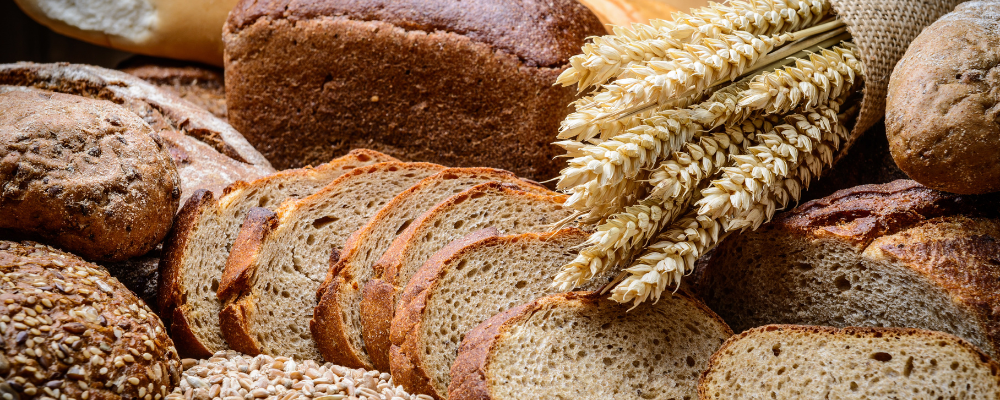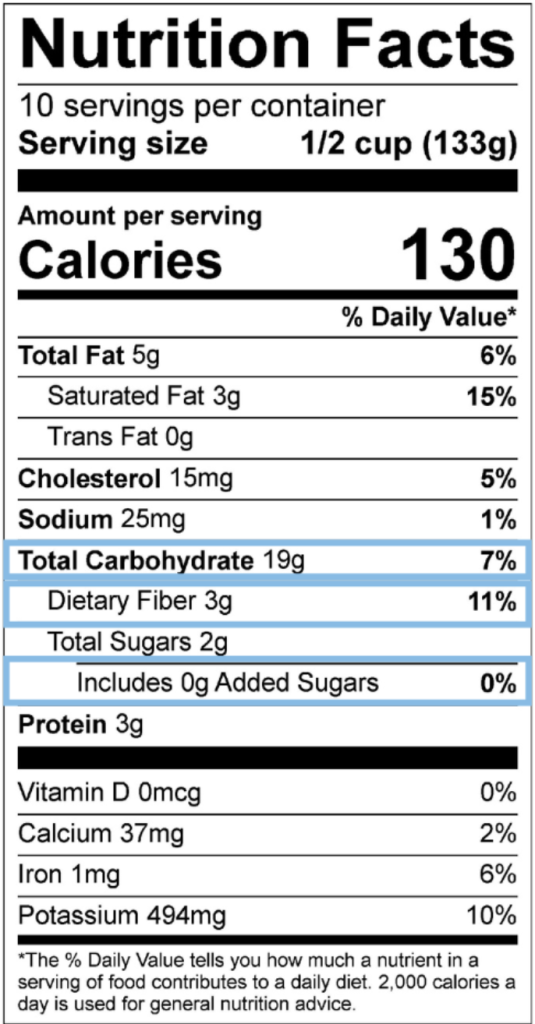
Navigating Nutrition Labels: Understanding Carbohydrates and Added Sugars
— By Jen Spann, University of Maine Dietetic Intern and Kate Yerxa, MS, RD, Extension Professor University of Maine Cooperative Extension
Reading a nutrition label can seem overwhelming, so we’re here to help! Here are a few key points to keep in mind:
- Nutrition facts labels are based on a standard 2,000 calorie per day diet
- All amounts listed are based on the serving size of the food item
Daily Value (%DV) for total carbohydrates is 275 grams per day
Total Carbohydrate includes dietary fiber and total sugars
- ≤5% daily value per serving is considered low
- ≥20% daily value per serving is considered high
Dietary Fiber recommendations are 25-35 grams per day
Added Sugars should make up 10% or less of daily calories
Carbohydrate provides 4 calories per gram
What are carbohydrates and why do we need them?
Carbohydrates are one of the three macronutrients found in food. A macronutrient is an essential nutrient that our bodies use in large amounts. Our bodies break down carbohydrates into glucose which is our body’s main source of energy (calories) for tissues and organs – especially our brain. Carbohydrates are arguably the most misunderstood of the macronutrients and are often associated with foods such as cake, pizza, and crackers. The truth is that carbohydrates are found in these foods, but they are also found in many other foods that make up a healthy diet, including:
- Fruits – apples, bananas, oranges, berries, melon
- Dairy – milk, yogurt
- Legumes – beans, peas, lentils
- Vegetables – potatoes, corn, peas
- Grains – bread, pasta, rice, cereal, and crackers
Carbohydrates are an important component of our dietary patterns, but it is important to choose carbohydrates that are low in added sugars and higher in whole grains.
Carbohydrates are broken down into three categories on a nutrition facts label:
- Total Carbohydrate
- Dietary Fiber
- Total Sugars
- Added Sugar
Total carbohydrate represents the total amount of dietary fiber and carbohydrates that are found in a food or beverage.
Dietary Fiber
Dietary fiber is found in plant foods that are not easily digested and do not contribute significantly to caloric intake. There are two types of fiber – soluble and insoluble. Soluble fiber can help to lower blood cholesterol levels by interfering with the absorption of both dietary cholesterol and fat. Insoluble fiber can regulate our digestive systems by speeding up the movement of waste.
Total Sugar
Total sugars represent the total amount of naturally occurring and added sugars in a food or beverage. Sugars are carbohydrates and provide energy for the body. Sugars sweeten, preserve, and improve the texture of foods. Sugar is found naturally in many foods including dairy products (lactose) and fruits and vegetables (fructose). The most common foods containing added sugars are desserts, candy, and sugar-sweetened beverages.
Five Ways to Limit Added Sugars
- Choose water as your main beverage and limit or avoid sugar-sweetened beverages.
- Use fruit or unsweetened applesauce as toppings in place of syrups and sugar-sweetened sauces.
- Choose whole fruits, fresh, frozen, or canned in 100% juice, as a snack, side dish, or dessert.
- Use the nutrition facts label to help you keep track of your added sugar intake to stay below the recommended daily value.
- Consume foods that are higher in added sugar in smaller amounts or less often.

